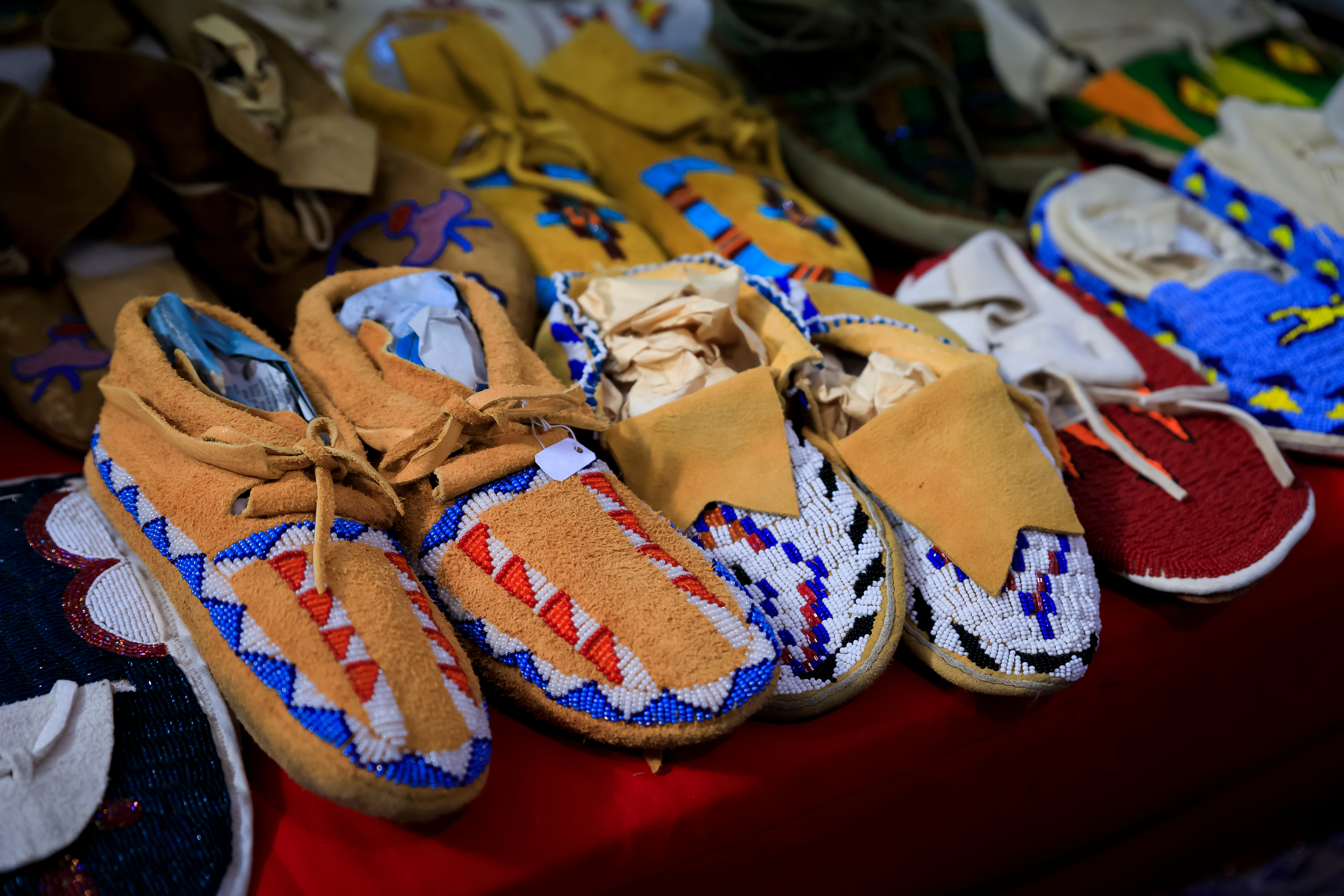
Native American Beadwork: Traditional Craft and Modern Collectibles

Native American Beadwork: Traditional Craft and Modern Collectibles
The Rich History of Native American Beadwork
Native American beadwork carries a profound historical and cultural significance that varies across different tribes and periods. This intricate form of art is not only a testament to the incredible skill and creativity of the artists but also serves as a vibrant thread connecting past and present generations.
Each tribe has its unique styles and patterns, which have been meticulously passed down through the ages. This amazing art form preserves the rich culture and continues the powerful form of storytelling and expression.
Regional differences will have its own designs, patterns, and colors emerge in the beadwork of various tribes, each narrating its own tale and holding its own place within its culture. Beadwork stands as a cultural cornerstone across indigenous peoples, reflecting a rich history, tradition, and creativity. Before the arrival of European colonizers, beading materials such as semi precious seed beads, stones, shells, quills, and bones, were used for centuries.
Later, with the introduction of new materials, like metal and glass beads began to be used. For instance, in Southwestern United States, the prevalent use of semi-precious stones like turquoise adds a layer of significance and beauty to the region’s crafted pieces.
The evolution of beading techniques mirrors the adaptability and creativity of indigenous cultures. The Lazy stitch, prominent in the Great Plains tribes, particularly the Sioux, features tight and neat rows, whereas the Tack stitch presents detailed circular designs with a flat and smooth texture, often preferred in contemporary beadwork.
Another notable method is the Peyote stitch, requiring patterns designed with a total number of beads evenly divisible by three, ideal for crafting keychains, and jewelry such as bracelets, necklaces, as well as other accessories.
As we delve deep into the history of Native American beading and explore the indigenous art form, it becomes clear that native beadwork is far more than just a decorative craft. Indigenous art is a vibrant language of identity, history, and resilience. The enduring beauty and significance of these beadwork pieces not only celebrate the rich cultural heritage of indigenous people but also ensure that their stories and traditions are preserved and appreciated for generations to come.
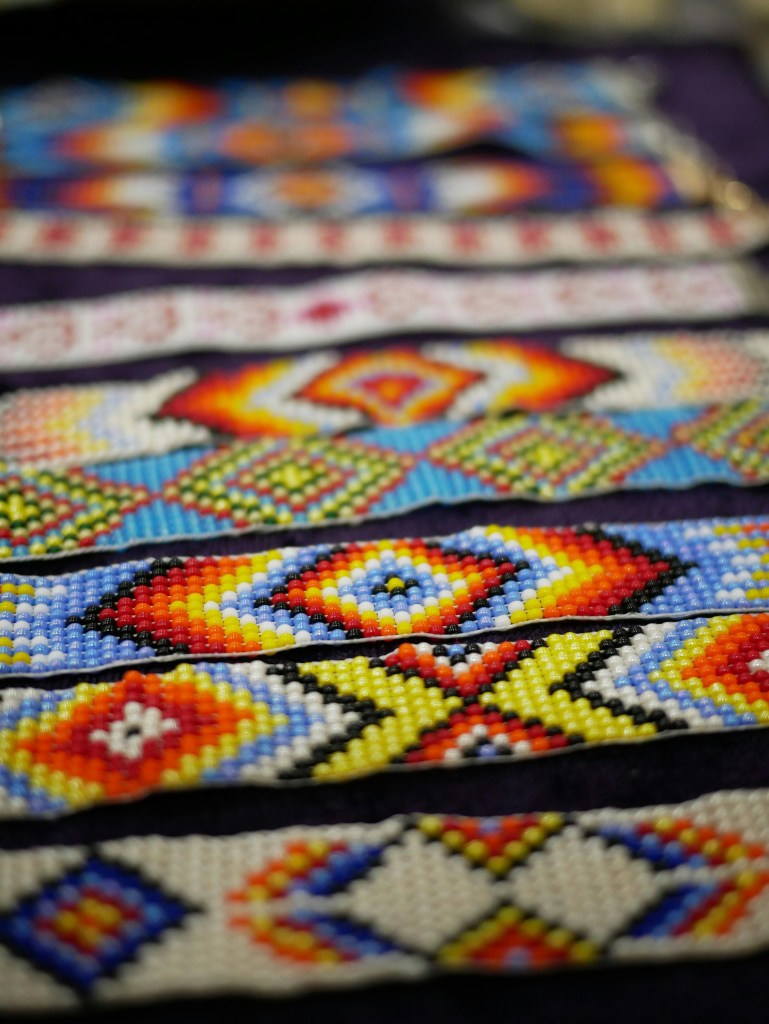
Caring for and Preserving Native American Beadwork
To ensure the longevity of Native American beadwork, it’s crucial to understand the best practices for its care and preservation. Whether you’re a collector or an enthusiast, applying the right techniques can ensure that beadwork pieces remain vibrant and intact for future generations.
The first step in preserving native beadwork is to understand the natural materials used in its creation. These pieces can be made from various beads, including glass, wood, shell, porcupine quills, seed beads, and other materials, each requiring specific care strategies.
For example, wooden and shell beads might be more sensitive to humidity and temperature fluctuations than metal or glass beads. Maintaining a stable environment, away from direct sunlight and extreme conditions, is key to preventing damage.
Proper storage plays a crucial role in preserving beadwork art. They should be stored in a way that avoids putting pressure on the beads and threads, as pressure can lead to deformation or breakage. In addition, gently wrapping the beadwork with acid-free paper can protect it from environmental conditions. If you’re displaying your pieces, use a UV-protected display case to prevent light damage.
When cleaning your pieces, it’s important to understand the materials. Carefully remove dust with a soft, dry brush, or opt for a low-suction, handheld vacuum. If using the latter, use a screen to avoid pulling the beads. Harsh detergents and water should be avoided as they can damage the threading or beads.
Engaging with the Native community is also crucial, as they can provide valuable insights and specific tips for caring for each type of beadwork. You can attend workshops, participate in online forums, and read publications hosted and written by Native Americans.
Engaging with the indigenous community will not only offer guidance and recommendations for care but will also help preserve the historical, cultural, and aesthetic value of your pieces.
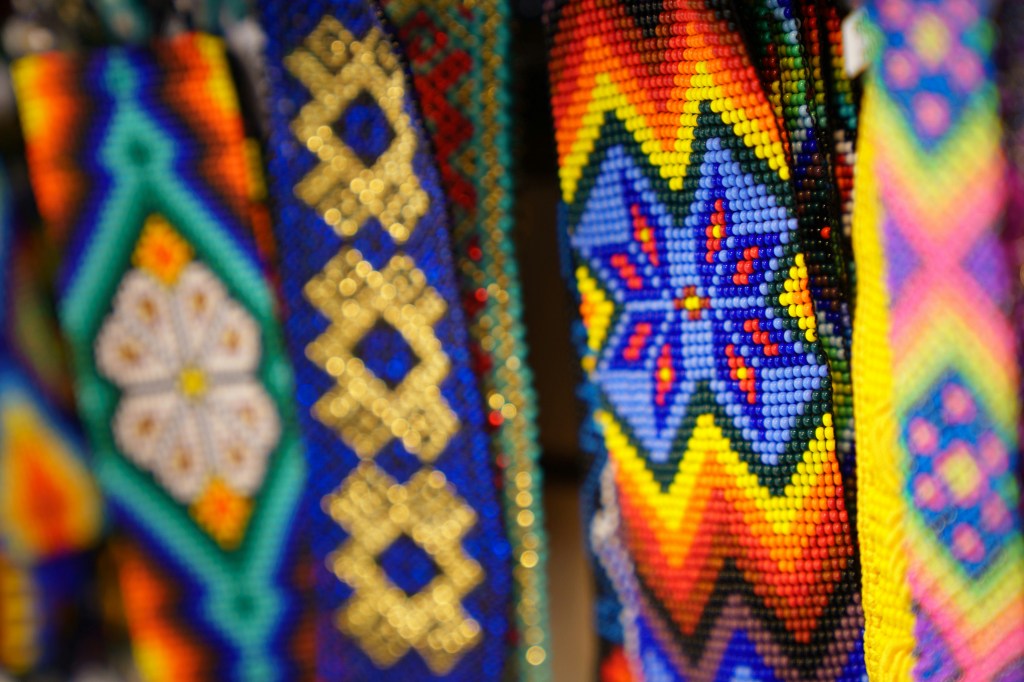
Displaying Your Native American Beadwork Collection
Finding innovative ways to display and preserve the intricate beauty of Native American beadwork is both a passion and a challenge. A beadwork collection is not just an array of artifacts; it’s a tapestry of cultural stories, each bead woven into a larger narrative of heritage and craftsmanship.
To truly honor these pieces, incorporating methods that protect their delicate structures while also elevating their aesthetic presence in your space is key. Whether it’s using shadow boxes to shield the beadwork from dust and direct light or designing a gallery wall that invites an up-close appreciation without risking damage, each approach should resonate with the reverence these artworks deserve.
Moreover, lighting plays a crucial role in showcasing beadwork, with soft, indirect light accentuating the vibrant colors and intricate patterns without causing fading or deterioration.
Showcasing Native art in galleries for public viewing will help foster an appreciation for its cultural and historical significance. This is particularly important given the wage gap between Native art and its non-Indigenous counterparts. Moreover, it is advisable to prioritize obtaining pieces directly from contemporary artists.
Collectors are encouraged to actively seek out and collaborate with artists, as numerous Native artists lack representation by galleries.
Creating a space that serves as both a sanctuary and a spotlight for your Native American beadwork collection is not just about displaying art—it’s about celebrating a living legacy and inviting others to engage with its beauty and significance.
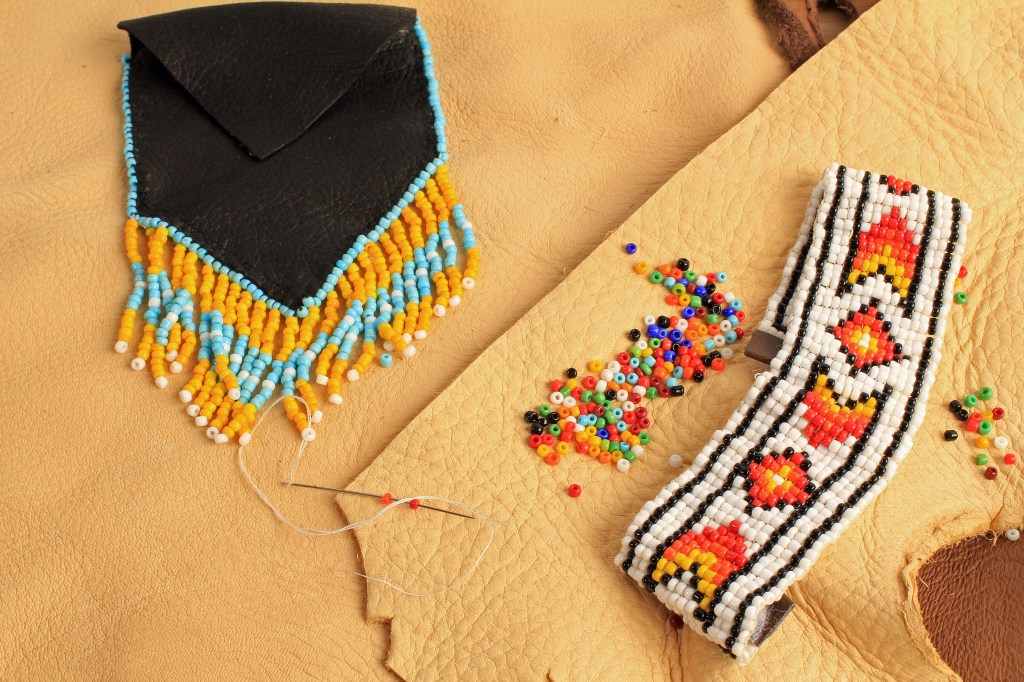
Insuring Your Native American Beadwork Collection
Protecting your valuable collection of Native American beadwork involves more than just possessing it. It requires securing its safety and long-term preservation through adequate insurance and preservation methods. Insuring collectibles, especially culturally and artistically important items of Native American beading, begins with recognizing their value. It’s not just about the monetary worth; it’s about appreciating the artistry, history, and cultural significance these pieces carry.
This awareness is crucial when determining the necessary insurance coverage. Look for insurance companies or policies specializing in art or collectible items as they are more likely to comprehend the intrinsic value of your beadwork collection and provide appropriate coverage.
Proper documentation is essential for safeguarding Native American art. Ensure detailed records for each piece in your collection, including photos, purchase receipts, and appraisals from field experts. This documentation is invaluable not just for insurance but also for future exhibitions or sales.
Regular appraisals are crucial due to the fluctuating art market; what had one value a few years ago might be worth substantially more today.
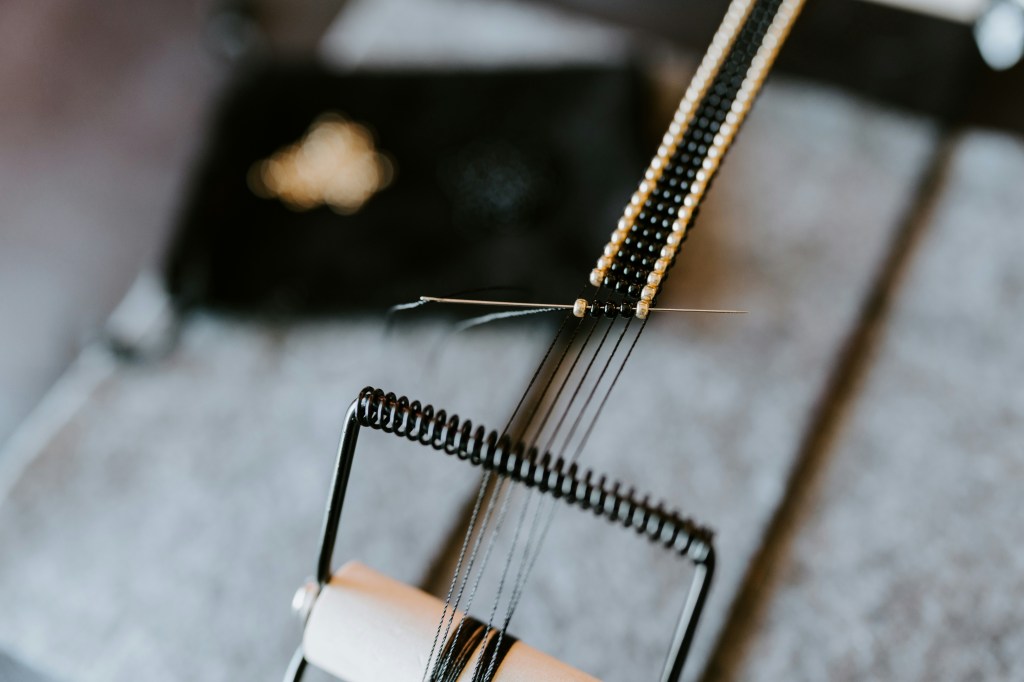
FAQ
Why should I insure my Native American beadwork collection?
Insuring your Native American beadwork collection provides financial protection against potential loss, damage, or theft, ensuring that your valuable items are safeguarded.
How do I determine the value of my Native American beadwork?
The value of your beadwork can be determined by factors such as age, rarity, condition, craftsmanship, and historical significance. Consulting with a professional appraiser can provide an accurate valuation.
What are the benefits of collecting Native American beadwork?
Collecting Native American beadwork offers a connection to rich cultural heritage, artistic appreciation, and the support of indigenous artists. It can also be a rewarding hobby that connects you with a community of fellow enthusiasts.
How can I best care for my Native American beadwork collection?
Regular cleaning, proper storage, and careful handling are essential for maintaining the condition of your beadwork. Avoid exposing it to extreme temperatures, humidity, and direct sunlight.
What types of insurance policies are available for Native American beadwork collectors?
Specialized collector insurance policies offer coverage tailored to the unique needs of collectors, including protection against damage, theft, and loss.
Where can I find valuable Native American beadwork for my collection?
Valuable Native American beadwork can be found through specialty galleries, online marketplaces, auctions, and events dedicated to indigenous art and collectibles.
How do I display my Native American beadwork collection without damaging it?
Use display cases, frames, and organizers designed for delicate artwork to keep your beadwork safe. Ensure it is kept in a clean, dry environment away from direct sunlight.
Can I appraise my beadwork myself, or do I need a professional?
While you can research and estimate the value of your beadwork, a professional appraiser can provide a more accurate and reliable valuation, especially for rare and high-value pieces.
Sources
https://windriver.org/understanding-native-beadwork/
https://www.communitynewspapergroup.com/waverly_newspapers/a-native-interest-waverly-man-spends-decades-collecting-indian-art-and-artifacts/article_de640864-a4cf-11ee-b118-3fbe1959176b.html
https://www.artsy.net/article/artsy-editorial-collectors-support-indigenous-native-american-artists
https://fightingbear.com/galleries/native-american-beadwork/
https://www.faustgallery.com/the-evolution-of-native-american-beadwork/
https://www.collectorsweekly.com/native-american/beadwork
About Collectibles Insurance Services
Collectibles Insurance Services has been protecting collections since 1966 and all coverage is provided by a carrier with a group rating of “A” (Excellent) by AM Best, the leading rating agency for the insurance industry.
Comprehensive coverage includes, but is not limited to: accidental breakage, burglary, fire, flood, loss in the mail, theft, natural disasters, and other causes of loss unless specifically excluded from the policy. Deductibles start at $0 for collector policies and we provide coverage for the market value of your collection for losses in excess of $50.
Additionally the protection extends At home and away, and we don't require collection itemization and serial number nor extensive paperwork and red tape.
